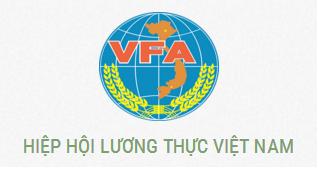Bach Duong
At the Workshop on Clean Market for Organic Farm Products and Organic Agriculture Products of the Ministry of Agriculture and Rural Development took place on October 7, many industry experts referred to the deadlocked stories, bad stories is taking place in the production of “real jade” – the pride of Vietnam export when many years in the position of No. 2 or top three rice exporters in the world.
Step through the splendor
From the peak, but recently, experts said that Vietnamese rice is stepping through the period of glory and falling into the deadlock both domestic and foreign markets.
On the international market, Vietnamese rice is losing market share by rivals like Cambodia and Thailand. The fierce market competition has made rice exports fall sharply in both quantity and quality.
Specifically, according to the latest report of the Ministry of Agriculture and Rural Development, in the first nine months of 2016, rice export volume is estimated at 3.76 million tons, earning 1.69 billion USD. Compared with the same period, this year’s rice has decreased by 16.4% in volume and 12.5% in value.
On the world market, many cases of Vietnamese rice export returned due to pesticide residue exceeded the threshold allowed. Meanwhile, according to the report of the Vietnam Food Association (VFA), in the first 6 months of 2016, more than 500 containers of Vietnamese fragrant rice was returned by the counterparty because of failure to meet quality standards.
VFA also said that in the past few years, especially in 2016, many export orders of aromatic rice of famous rice exporters in the markets have been returned because of the real pesticide residue things, must sell inland.
Recently, the Deputy Minister of Agriculture and Rural Development, VnEconomy said that through the inspection of the US Food and Drug Administration (FDA), there are eight active substances in Vietnam rice. When exported to the US exceed the limit. All 8 active ingredients are on the list of pesticides allowed in Vietnam.
Information from the FDA led by the VFA showed that in the first four months of 2016, 95 containers (equivalent to over 1,700 tons) of US rice were returned, mainly jasmine jasmine rice, jasmine rice , brown rice and high quality white rice.
Between 2012 and August 2016, a total of 16 Vietnamese rice exporters to the United States were repatriated, with a total of 412 containers, equivalent to nearly 10,000 tons
The risk of losing home
Meanwhile, the domestic rice market faces the risk of losing home ground because foreign rice is tending to invade. The Cambodian or Thai rice brands are also massively imported from Cambodia, Sa Mu, Ngu Chim ….
From that fact, GS. Vo Tong Xuan said there is a tendency for companies exporting rice to be repeatedly banned because of pesticide residues. Even in the country, many people do not like Vietnamese rice.
According to GS. Vo Tong Xuan, there are many reasons why Vietnam rice forest into the deadlock both in and out. For example, in Vietnam, farmers are free to produce, anyone who likes to plant anything is not planned. When the rice is infected with pests, go to the plant protection drug shop to buy bluffs, listen to the seller advertising the best insecticide, the purchase leads to the loss of Vietnamese food safety hygiene.
Nguyen Tu Anh, representative of GAP Agriculture, also said that Vietnamese rice is losing points in the eyes of the Vietnamese. Accordingly, in Vietnam, those who go to the market often choose to buy rice, rice in Cambodia. At the same time, the quality of rice has been declining as people overuse chemical fertilizers (urea).
In the specialized rice-growing areas, farmers are still proud of the traditional old-fashioned farming methods, not allowing young people to adopt new farming practices instead. Therefore, the production cost is always high and rice quality is poor. Vo Tong Xuan shared.
“The rice sector is now divided into developmental stages, such as malnutrition, over-supply and surplus periods, new productive technologies, and green manufacturing. The countries are in the stage of production by the mode of green technology, and Vietnam after many years still only at the stage of excess production, not to grow up, still only focus on quality but not quality should. It is very difficult to compete, “Xuan said.
Le Dang Doanh, a business expert, said that Vietnamese rice is difficult due to the fact that its production is still in a worn-out manner, produced in a fragmented manner, and that there is a lack of large sample fields leading to the quality of Vietnamese rice seeds being uneven. .
He said: “A field of thousands of fields, this field planted a variety of rice, the field planted another. When the rice is flowering, rice pollen in the field to fly to the other side of rice field should not be high quality grain. Since then, it is very difficult to brand the Vietnamese rice. ”
Accordingly, to Vietnam rice regain “style,” building a prestigious brand, TS. Le Dang Doanh said that the sectoral level must uphold the spirit of innovation. Vietnamese rice needs to focus on quality, cost and especially food safety. Because, the current consumption trend of the people is to eat less but must be delicious and safe to regain market.

















